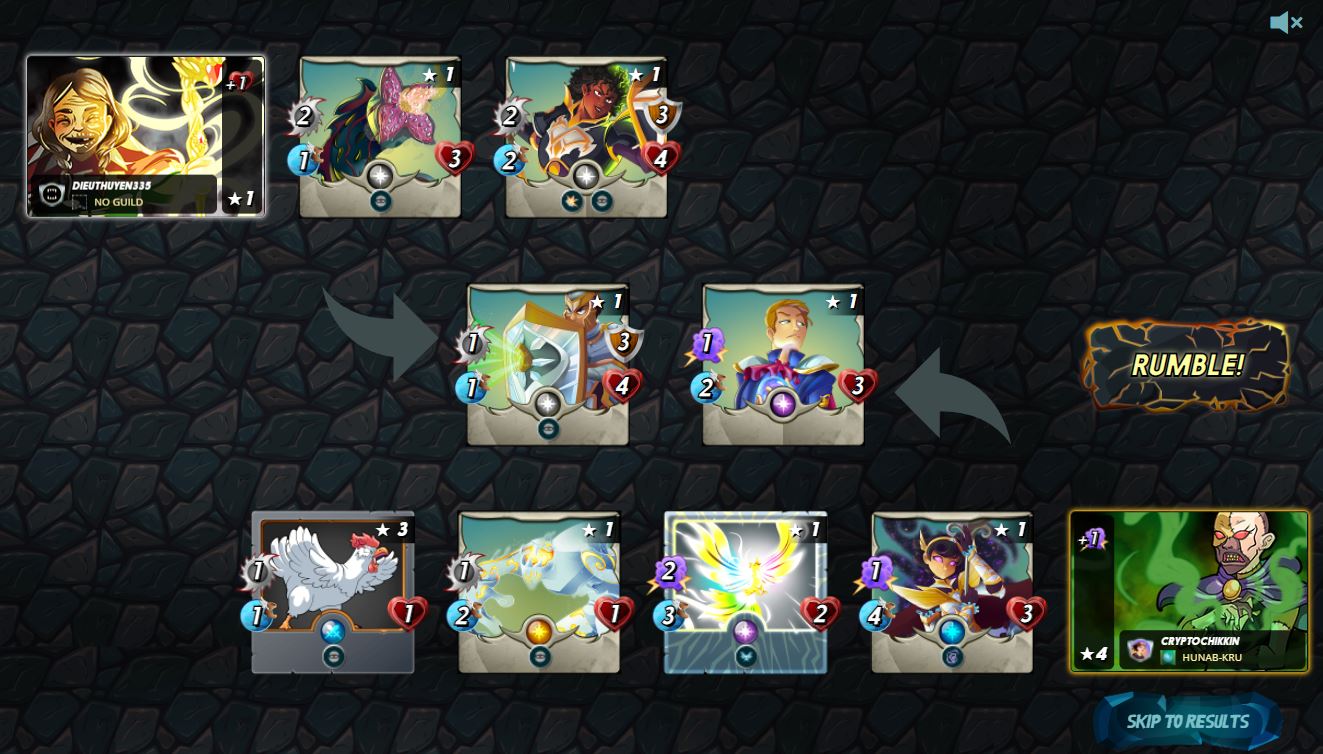A Quick Word on Rulesets
Hello all,
Here I am again (pardon my sporadic appearance and frequent absence), making a short post which will probably lengthen as I realize that running my digital mouth is fun.
I had a battle the other day which I was quite happy with, and which sparked a thought in me to discuss: the way rulesets affect not only the way in which cards interact; but also the way in which players interact. This is what I like to call the 'gravity of the ruleset', and a poignant example of it is the Brighton Bloom mirror match in the Earthquake ruleset.
Now, since I'm clocking myself here by actually posting a battle, I'll put the disclaimer that I'm a hardstuck Silver and all my strategic musings should be taken in this context.
Without further ado, here is the battle in question, and this is how it begins:
For those who have read my previous post, or The Art of War, it's plain to see that I've just picked an unorthodox team. Since trample isn't too common in Silver, both of us ignored that rule. However, the Super Sneak ruleset can completely warp the game; and that's exactly what happened here.

Splintercards.com has this to say as a hint for Super Sneak; 'Choose a summoner that increases/reduces Melee attack or Mylor. Keep a monster with Shield, Retaliate or Thorns in the last position.' Pretty straightforward, right? My opponent and I took this basic advice in two completely seperate directions though.
They chose the orthodox, putting a decent wall in the front, an attacker in the middle and a shielded wall in the back to deal with all the sneak that would be coming at them. Except it didn't. I chose the unorthodox, betting that they would prepare only for melee damage (especially since it was only a 15 mana cap), chose only magic users for offense and threw my fodder units in the back to hold their sneak attacks off for a turn. My bet paid off, as they lost their front line partway through the first round. By the end of the round, this is how things looked:

The battle is over in very short order.
If I were using melee units as intended, I would have had to work through the armor of the Blinding Reflector and Chaos Knight, as well as Shield. That may not have gone so well for me. But against magic, neither of these factors matter and in fact they become downsides; as they just cost more mana without any benefit.
Personally, as someone who played mostly counter Black in my first year of Splinterlands, this is one of my favorite strategies; tracking a pattern that is often used to play around a certain ruleset and then countering that pattern. Of course, this has to be done with caution, because when overdone it can create a pretty flimsy strategy that will fall apart if the specific pattern it counters doesn't emerge.
Anyways, the strategy of using the gravity of a ruleset doesn't end here.

Have you tried playing Target Practice with a purely melee team? This allows you to be entirely certain of where all your opponent's ranged/magic attacks will land. You can absorb all their damage into a single large wall in the front, while using Sneak and Opportunity to dissect their backrow without fear of retaliation.
There are plenty of free victories to be had by those brave enough to no-sell the gravity of a ruleset.
As always, thank you for making this awesome game what it is, happy Splintering, and see you next time :)
Posted using Splintertalk
